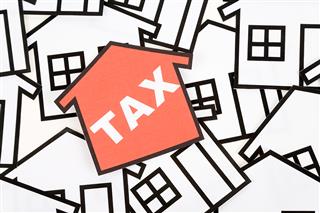
Your family’s home is generally known to be exempt from capital gains taxation because of the principal residence exemption. If the property was your principal residence for every year you owned it, you do not have to report the sale of your home on your income tax return.
To qualify for the principal residence exemption, the following conditions have to be met:
- You, your current or former spouse or common-law partner, or any of your children lived in it at some time during the year; and
- For years after 1981, each family unit may designate only one home per year as a principal residence. A family unit includes you, your spouse or common-law partner and unmarried minor children.
- The land on which your home is located can be part of your principal residence. Usually, the amount of land that you can consider as part of your principal residence is limited to one-half hectare (1.24 acres). However, if you can show that you need more land to use and enjoy your home, you can consider more than this amount as part of your principal residence.
There are three special situations you should be aware to avoid losing the principal residence exemption of your home.
1. Be careful flipping homes.
If you buy and sell your home too often, you may lose the principal residence exemption and even the 50% capital gains inclusion break if CRA thinks you are in the business of buying and selling homes.
On Sept. 6, 2012, in the case of Sylvie Giguère (tcc-cci.gc.ca), Ms. Giguère and her spouse lost a court battle on this issue. The couple had sold seven single-family residences within a six-year period, claiming the principal residence exemption on each sale.
CRA successfully argued that the profits should be taxed as business income and penalties should apply for failure to report the income.
2. Changing your principal residence to a rental property
If you move out from your principal residence and rent it out, you can make a selection to keep the property as your principal residence for up to 4 years. This means any capital gains realized on the sale of this property during those years would be sheltered from tax. To be eligible, the following conditions have to be met.
- you have to report the net rental income you earn; and
- you cannot claim capital cost allowance (CCA) on the property.
- you do not designate any other property as your principal residence for this time.
To make this election, you have to file a letter signed by you to CRA. The letter should describe the property and state that you are making an election under subsection 45(2) of the Income Tax Act.
3. Changing part of your home to rental
You can rent part of your home and the whole property is still qualified for the principal residence exemption if you meet all these following conditions
- the part you use for rental purposes is small in relation to the whole property;
- you do not make any structural changes to the property to make it more suitable for rental purposes; and
- you do not deduct any CCA on the part you are using for rental purposes.
The principal residence exemption rules and calculations are complicated. You can check more informaton on CRA website.
